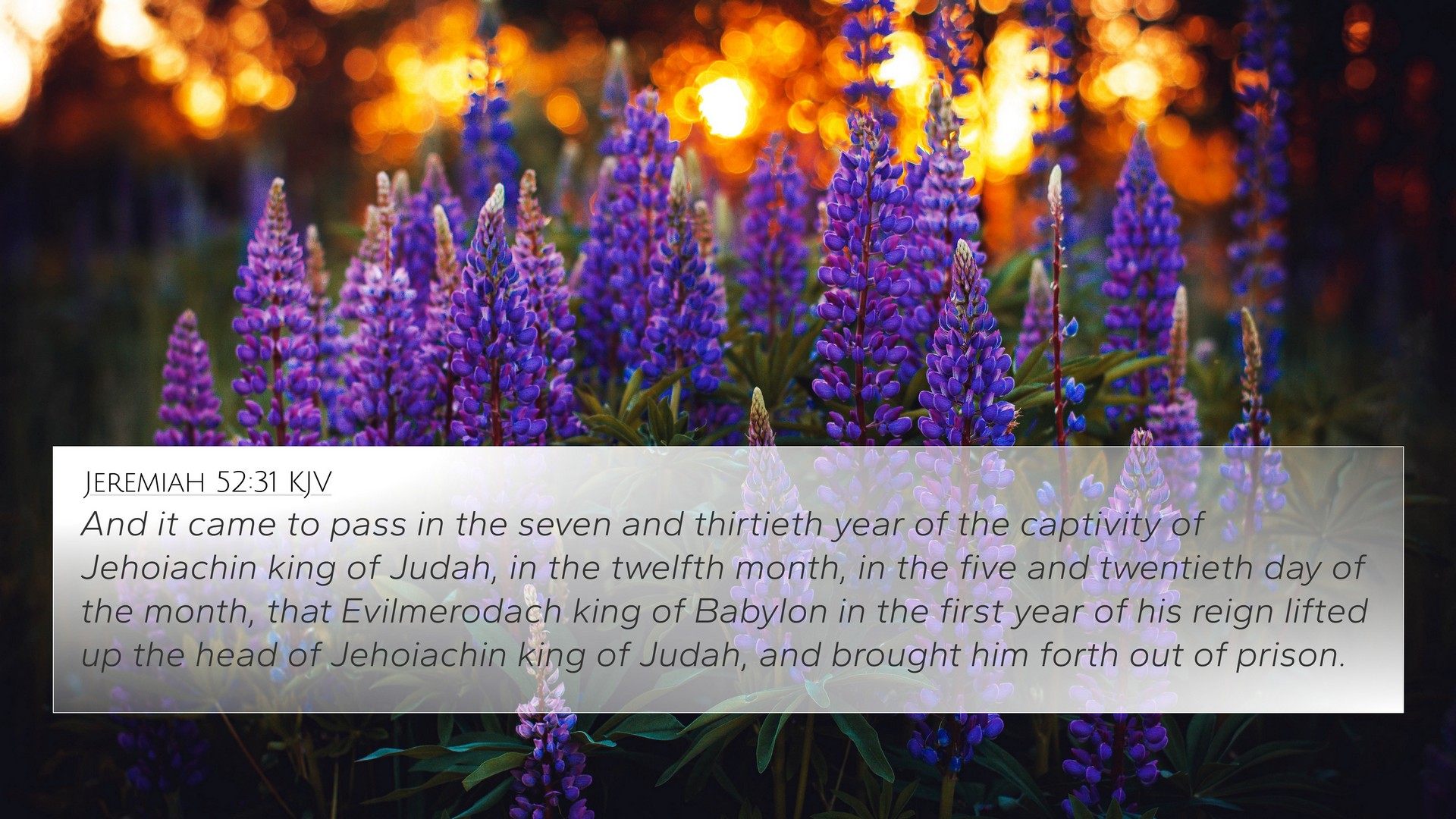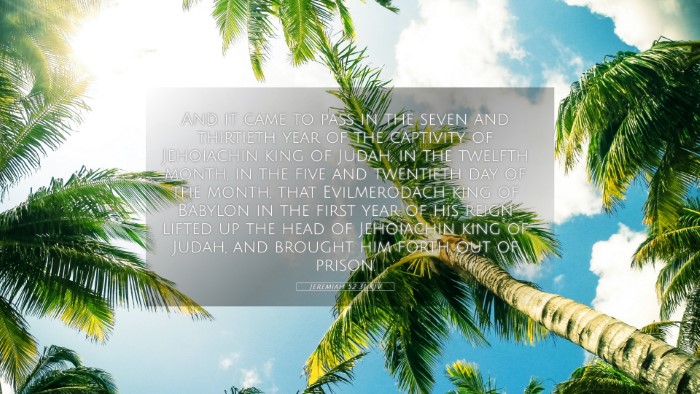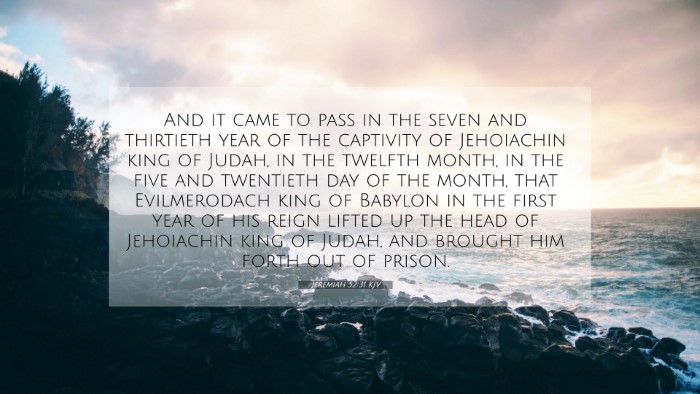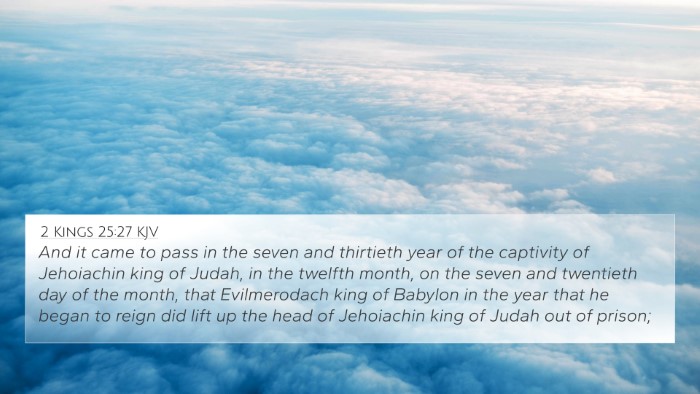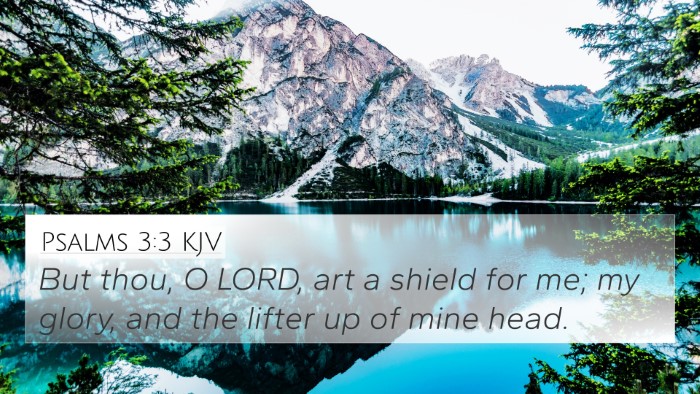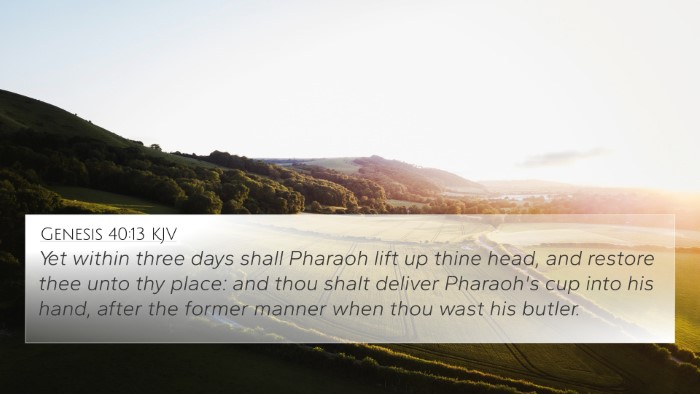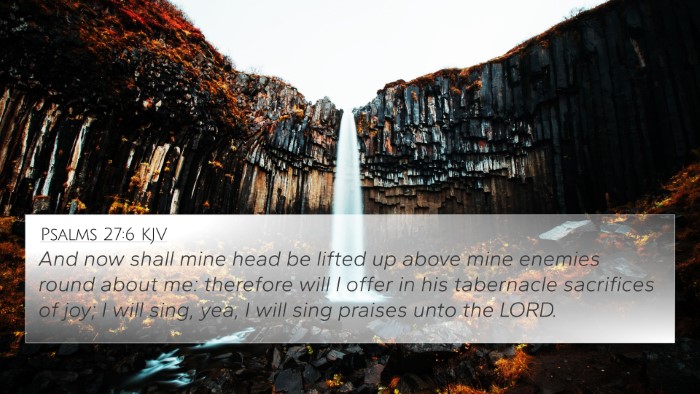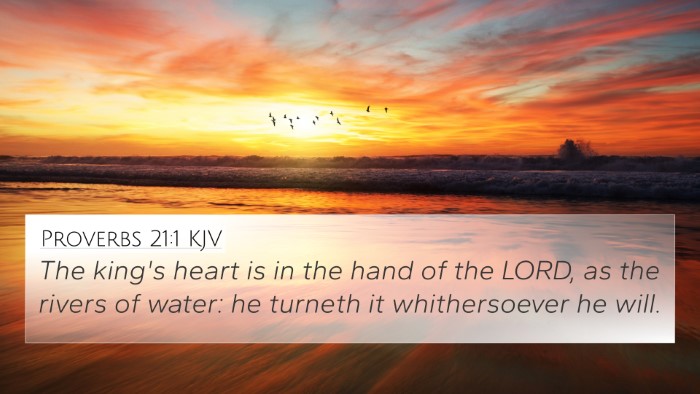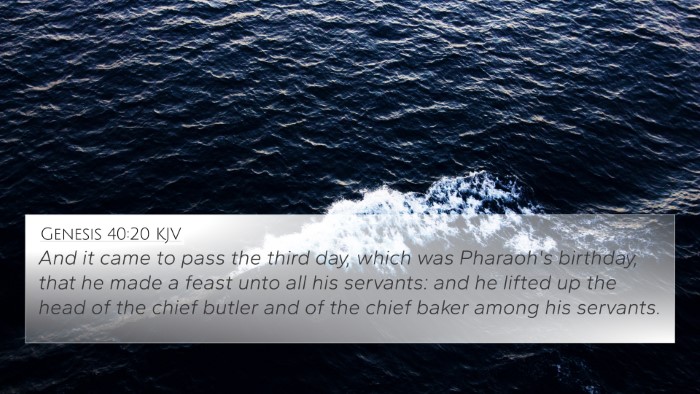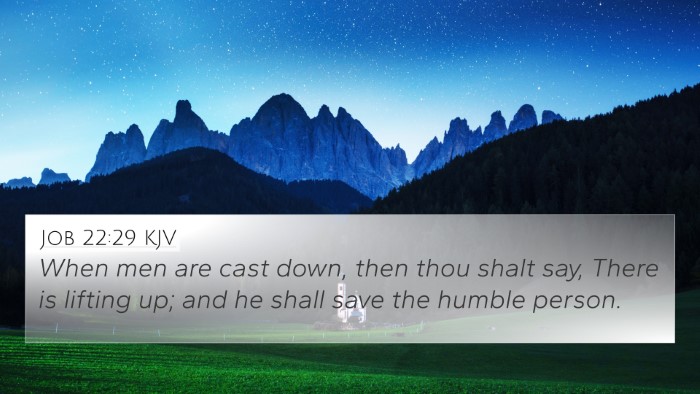Understanding Jeremiah 52:31
Jeremiah 52:31 states: "And it came to pass in the thirty-seventh year of the captivity of Jehoiachin king of Judah, in the twelfth month, in the five and twentieth day of the month, that Evil-merodach king of Babylon in the year that he began to reign lifted up the head of Jehoiachin king of Judah, and brought him forth out of prison." This verse marks a pivotal moment in the history of Israel, indicating the beginning of restoration from captivity.
Contextual Background
This passage occurs at the close of Jeremiah's prophecies and demonstrates God's sovereignty and faithfulness in restoring His people after their exile. The reference to Jehoiachin, who was dethroned and imprisoned, illustrates the profound themes of hope and restoration present throughout the book of Jeremiah.
Verse Analysis and Insights
- Matthew Henry's Commentary: Henry emphasizes the grace shown by Evil-merodach to Jehoiachin, a prisoner of war, interpreting this act as a reflection of God's promise of restoration. The lifting of Jehoiachin's head symbolizes dignity and renewed hope after a period of despair.
- Albert Barnes' Notes: Barnes highlights the importance of the timing of this release, which coincides with a significant year in Jehoiachin's captivity. This timing serves as a reminder of God’s perfect timing in fulfilling His promises.
- Adam Clarke's Commentary: Clarke notes that the release of Jehoiachin could signify not only physical liberation but also a spiritual awakening, encouraging the captives to return to their heritage and faith.
Thematic Connections
The themes of divine intervention, restoration, and the hope of redemption resonate throughout the Bible. This verse serves as a bridge to understanding the broader narrative of Israel's history and God's ongoing relationship with His people.
Bible Verse Cross-References
Understanding Jeremiah 52:31 can be enriched by examining several related scriptures:
- 2 Kings 25:27-30: The account of Jehoiachin’s release from prison underscores the historical significance of this event.
- Ezekiel 16:53-55: Speaks of the restoration of corrupted cities, paralleling the restoration of Judah.
- Isaiah 40:1-2: Proclaims comfort and the end of warfare, linking to the theme of restoration after captivity.
- 2 Chronicles 36:22-23: Describes Cyrus's decree, which directly relates to the return from exile and rebuilding.
- Romans 15:4: States that everything written in the past is for our instruction, emphasizing that these Old Testament events provide hope and learning for New Testament believers.
- Jeremiah 29:10-14: The promise of restoration after seventy years in Babylon serves as a foundational context for understanding the shift in Jehoiachin’s situation.
- Zech. 8:7-8: Refers to God's intention to bring His people back to their land, reinforcing the promise of restoration.
Tools for Further Study
For those interested in a deeper exploration of the connections highlighted in Jeremiah 52:31, several tools can assist in cross-referencing biblical texts:
- Bible Concordance: A valuable resource for finding themes and references throughout Scripture.
- Bible Cross-Reference Guide: Offers a systematic approach to exploring related verses.
- Cross-Reference Bible Study: Methods to study the Bible by direct comparisons between verses.
- Bible Reference Resources: A range of materials designed to assist in biblical research and understanding.
Conclusion
In summary, Jeremiah 52:31 encapsulates a critical moment of divine mercy that speaks not only to the historical audience but also to modern readers seeking profound biblical truths. The intertwining of hope, restoration, and the faithfulness of God is a recurring theme that continues to resonate through the scriptures. By engaging in systematic cross-referencing and comparative analysis, readers can uncover a wealth of understanding and inspiration rooted in God's Word.
Key Takeaways
The following points summarize the insights gained from Jeremiah 52:31:
- It highlights God's sovereignty over nations and individuals.
- Marks a crucial transition point in Israel's history after exile.
- Reflects themes of restoration and dignity after suffering.
- Encourages the faithful to trust in God's capacity to bring change.
